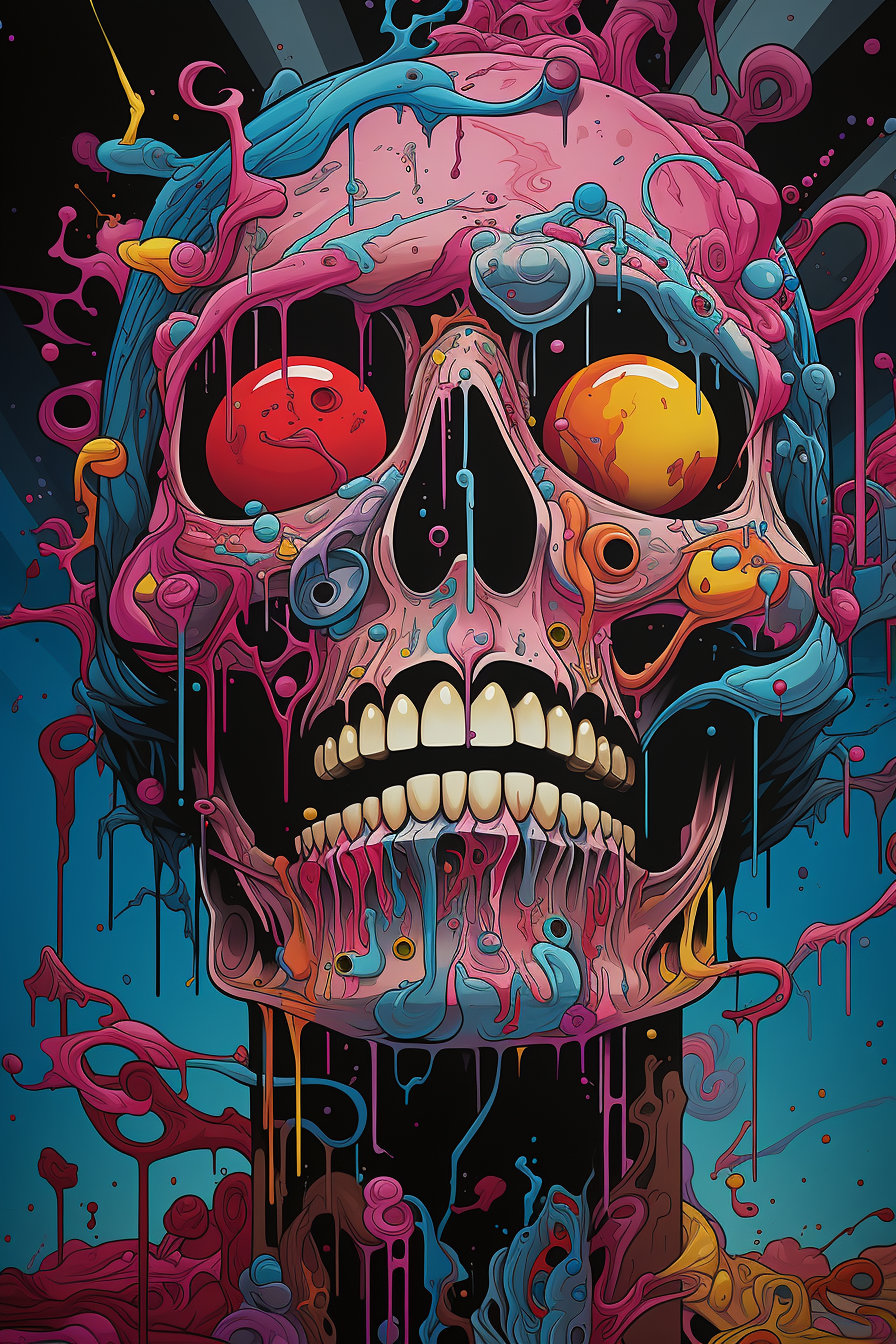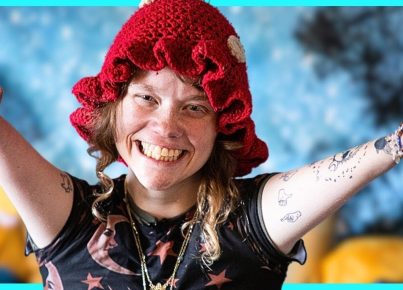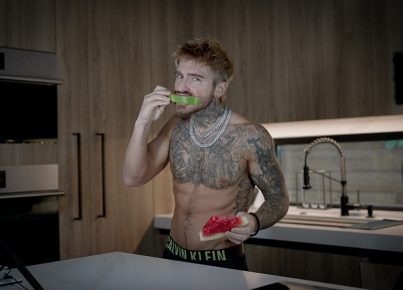
By Annie Stopak
It was the 1950’s. You walked into a back-alley store that was a cross between an old-fashioned soda parlor and a barber shop. It was a space that holds more evidence of old than new with plenty to marvel at. Checkerboard vinyl floors, exposed brick walls, arched doorways, and secret crevices amused clients awaiting a tattoo. The walls, covered in prolific floor to ceiling tattoo art, led onlookers down a journey of creativity and wonder. Once seated in the charming reclining chair, you could hear the gentle hum of the rotary machine under brightly-lit fluorescents – a scene that tattoo aficionados continue to know and love, even today.
But with Artificial Intelligence pushing the limits of new technology, will the traditional tattoo method be a thing of the past…only to exist in our distant memory? It’s a question asserted by the creative industry following the explosive launch of AI platforms like ChatGPT, Jasper, and ChatSonic. Many would argue that talent, creativity, and intuition can’t be manufactured; the human element will always play a part. But how does anyone really know?
Making the distinction between artificial versus original is one of the most controversial aspects of this new technology. Some would say that a tattoo has to be created by an artist to be considered original while others say, not only that, but the artist must possess advanced artistic talent as well. There’s no doubt, AI is blurring the ethical line. No one has established at what point AI is replicating someone else’s art or even diluting the artistic draw. But regardless of what is true or not, we can all acknowledge that the industry is changing and all tattoo endeavors support art, no matter how we get there. Technology shapes the culture in which we live, and it behooves us to lean into these new discoveries, while using it as a tool to strengthen our craft.
Some businesses have proven to be pioneers in the industry, leading with AI practices to embrace success from this new market of curious clientele. Monster Crawling, one of the leaders in AI and tattoos, did just that. With skills in software engineering, the team gained 400,000 dedicated followers in under a year. “AI has been pivotal to this explosive growth,” said Bozidar Djordjevic, CEO at Monster Crawling. “Our mission is to propel the industry into the future.”
![]()

Monster Crawling understands the importance of real talent in an effort to keep the heart and soul of the industry intact. “We’re at the forefront of AI innovation in the tattoo realm. Not only do we utilize existing AI tools, but we’re also developing proprietary technology,” Djordjevic said. The brand intends on launching a first-ever app for tattoo artists that encourages artists to elevate their technique. Think master class for tattoos with world-class mentors. The training will also teach a deeper understanding of marketing, business, and of course, AI integration.
If businesses continue to place skilled artists at the center of AI, professionals say it could strengthen the industry as well as the appeal. According to research, advanced tattoo designs can take years of practice, and many novice artists struggle with conceptualizing this creativity, so having artificial intelligence as a tool could perhaps make them more attractive as a job seeker.
But ironically, no one really saw this coming. Engineers were surprised to discover the intelligence behind a system that wasn’t only wired to do analytical functionality, but so much more. “I always believed creativity would be one of the last frontiers for artificial intelligence,” Djordjevic said. “Many predicted that AI would eventually solve every logical task, leaving humans with just art and poetry.”
And the poetic draw behind some digital art is hard to ignore. Baris Gencel, an award-winning AI artist, has much to share when it comes to paving a powerful future for talented artists and this new technology. Pulling inspiration from futuristic fashion and virtual reality, Gencel boasts works of art that depict an ominous metaverse that artfully blends the beauty of profound oppression with creation. And when asked what drives his inspiration… His response centered around a passion for bringing awareness to ecological issues – specifically nature and climate change – a perfect example of how his interpretation of AI transcends skill level.
As appealing as this technology seems to some creatives, there are still artists who don’t favor the technology. “Personally when I look at these AI generated images, even though they are quite beautiful, I get this weird feeling in my belly,” said Raimo Marti, a Scandinavian Tattoo artist based in Denmark. “I think art is defined by much more than just a beautiful image. It is an expression of the soul.”

Gencel supports the notion that while AI can generate designs, the physical act of tattooing remains a soulful endeavor. More or less, he perceives it as a source of inspiration, not meant to replace actual talent. “AI is fundamentally a tool, akin to any other instrument,” Gencel said. “Its potential is harnessed through human creativity and ingenuity.”
Certain computer applications have made embracing this technology as easy as a touch of a button. BlackInk AI replaces the daunting task of browsing the web, Instagram, or Pinterest for hours on end. Once the client finds the platform they enjoy most, they describe the art they are after in a few short words, and the image is generated in less than a minute. This type of service is most appealing to newbies wanting to receive a tattoo; not to tattoo artists, as it’s less complex and far from original.
Photoleap, on the other hand, is an advanced iOS and Android app from the same developers as Facetune. The personalization aspect takes this platform a step further. The technology uses the ‘try before you buy’ method by letting a user upload a personal photo and overlay it with their chosen design. This app is made for sophisticated individuals who are privy to tattoo art and customizable features. Likely, they are well-versed in the culture and keep a close eye on tattoo trends. Adobe Firefly is similar in the personalization department but even more advanced, allowing you to recolor images or refine edges to add a touch of your own flair to rendered tattoo art.
Other services are creating shortcuts in a different way. You might have heard whispers of the French intelligence robot called Tatoué, the first ever 3D tattoo printer that uses pre-loaded designs to perform a service. Or take Tattoodo, a modern marketplace for tattoo inspiration that is influential for connecting you with the right tattoo artist. Operating like Google for tattoos, this niche website is yet another opportunity to simplify your search by using AI to locate talent in your area.
After uncovering only a handful of the dozens of AI options, it’s quite obvious that there’s an ‘app for that,’ and the technology will continue to improve every day. “History reminds us that technological progress inevitably elevates associated industries, but it also shifts the benchmark. What’s considered average today may be deemed subpar tomorrow,” Djordjevic said. These hard-working machines gather knowledge at a rapid rate. Taking subtle cues and storing data provides them with more intelligence than they could have ever imagined.
So the question remains, will this technology eventually outsmart humans? Stay tuned to find out. And in the meantime, studying the intricacies of these programs puts businesses at an advantage while providing a leg-up on competitors. Accomplishing tasks in a smoother manner with less stress and effort is a win for creatives and beyond. And just maybe, we won’t lose sight of what once made tattoo art so iconic.






